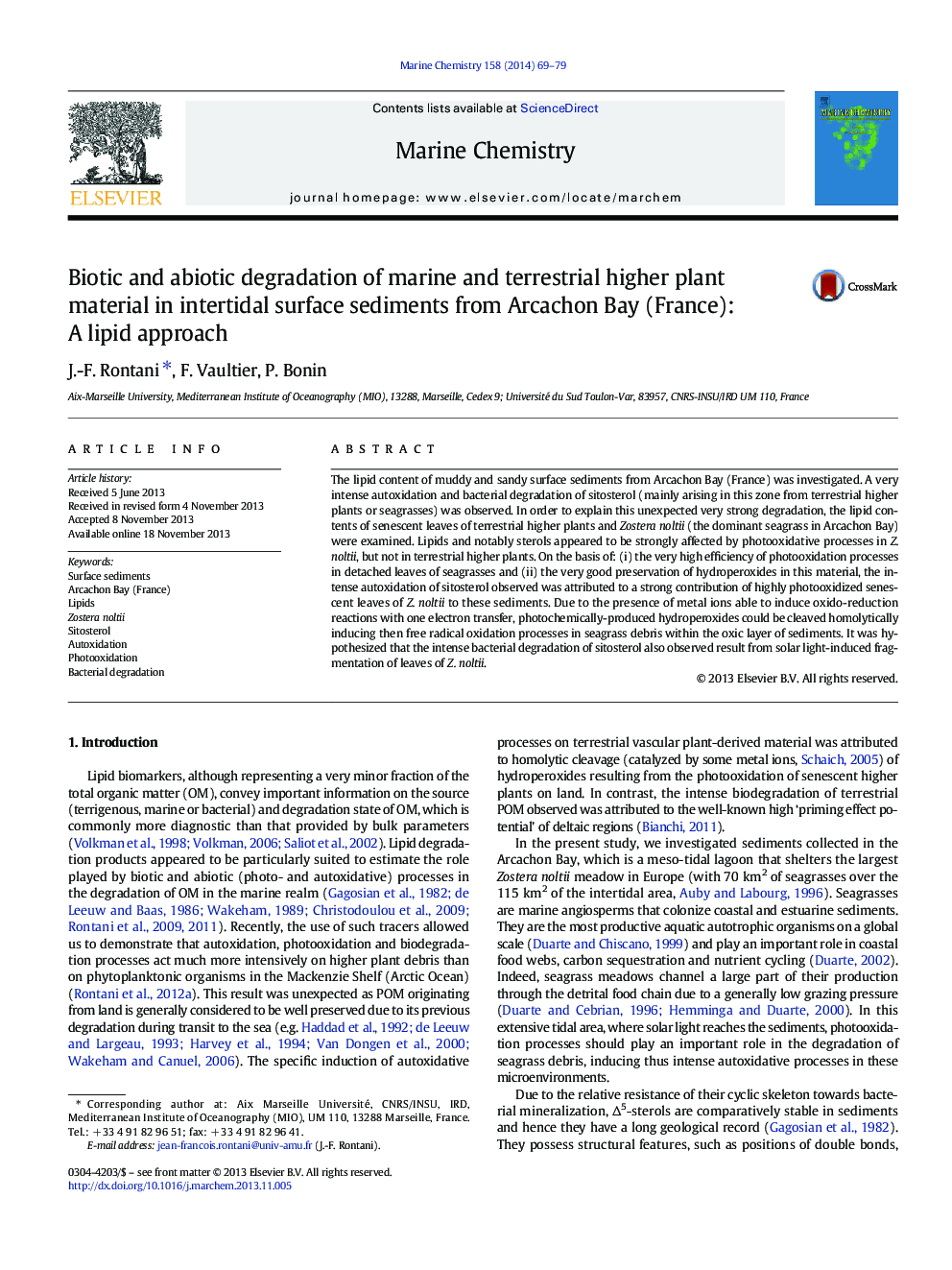| Article ID | Journal | Published Year | Pages | File Type |
|---|---|---|---|---|
| 1262966 | Marine Chemistry | 2014 | 11 Pages |
•The lipid content of surface sediments from Arcachon Bay was investigated.•A very intense autoxidation and bacterial degradation of sitosterol was observed.•Photosensitized oxidation processes appeared to be very active in Zostera noltii.•These processes weakly affect lipids in senescent terrestrial higher plants.•Autoxidation could result from a strong contribution of Z. noltii to these sediments.
The lipid content of muddy and sandy surface sediments from Arcachon Bay (France) was investigated. A very intense autoxidation and bacterial degradation of sitosterol (mainly arising in this zone from terrestrial higher plants or seagrasses) was observed. In order to explain this unexpected very strong degradation, the lipid contents of senescent leaves of terrestrial higher plants and Zostera noltii (the dominant seagrass in Arcachon Bay) were examined. Lipids and notably sterols appeared to be strongly affected by photooxidative processes in Z. noltii, but not in terrestrial higher plants. On the basis of: (i) the very high efficiency of photooxidation processes in detached leaves of seagrasses and (ii) the very good preservation of hydroperoxides in this material, the intense autoxidation of sitosterol observed was attributed to a strong contribution of highly photooxidized senescent leaves of Z. noltii to these sediments. Due to the presence of metal ions able to induce oxido-reduction reactions with one electron transfer, photochemically-produced hydroperoxides could be cleaved homolytically inducing then free radical oxidation processes in seagrass debris within the oxic layer of sediments. It was hypothesized that the intense bacterial degradation of sitosterol also observed result from solar light-induced fragmentation of leaves of Z. noltii.
